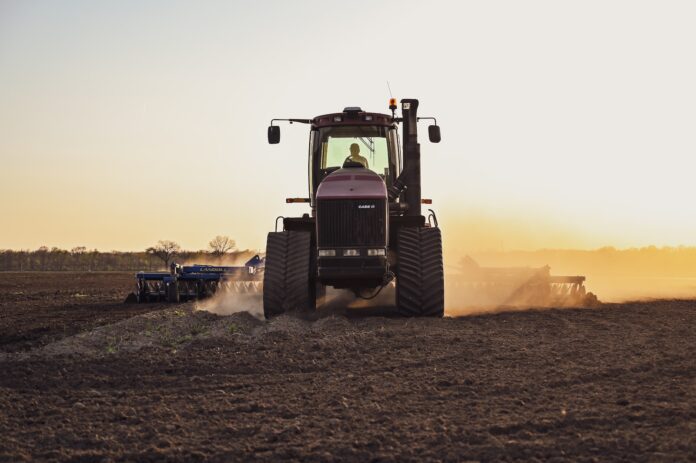It’s going to take more than a few days of rain to pull the region out of its unusually dry start to the growing season.
Much of Ohio and Pennsylvania were officially designated as being in a drought last week.
According to the June 8 U.S. Drought Monitor update, 62% of Ohio and 65% of Pennsylvania are experiencing moderate drought conditions. The rest of both states are considered to be abnormally dry.
A large swath of Ohio, from southwest to northeast, got between 1 and 2 inches of rain over the weekend, said Geddy Davis, a meteorologist and atmospheric scientist at Ohio State University’s Byrd Polar and Climate Research Center, which brought farmers some immediate relief from the dust.
More stormy weather is in the forecast over the coming week, but Davis said folks should temper their enthusiasm. We’re not out of the woods, yet.
“This rain helps. It absolutely helps,” Davis said. “We’ll probably see a green up here in a day or two, but if we don’t get that consistency, it’s easy to fall back into that drought pattern.”
By the numbers
Davis said many parts of Ohio are running anywhere from 1.5 to 3 inches below normal for rainfall for May.
Youngstown had 1.3 inches of rain in May, a 2.42 inch departure from normal. Dayton got 1.89 inches of rain last month, 2.6 inches below normal. Wooster got 1.6 inches of rainfall, 2.3 inches below normal.
Though it’s dried up recently, Ohio overall is about average for precipitation for the year, Davis said. January was quite wet and the rest of the months had average amounts of precipitation until May. In fact, the state is slightly above normal for precipitation for the year so far, according to the National Integrated Drought Information System, or NIDIS.
In Pennsylvania, recent conditions are about the same, according to June 12 U.S. Department of Agriculture Crop Progress report. In the past month, most areas are at about 3 inches below normal on rainfall.
This was the fifth driest May on record in Pennsylvania, with about 1.7 inches of precipitation for the state. That’s a 2.23 inch departure from normal.
It’s also been one of the drier starts to a year in recorded weather history. This is the 12th driest January to May period since 1895. The state is about 3 inches below normal for precipitation for the year, according to the NIDIS.
Crops
While the dry spell has been good for getting hay put up and getting corn and beans planted, crop conditions are beginning to suffer.
About 51% of corn and soybeans in Ohio were in good condition, according to the latest USDA Crop Program report. About 39% of corn was fair and 40% of soybeans were in fair condition. Topsoil moisture was 42% short and 35% very short.
In Pennsylvania, only 20% of corn and 23% of soybeans were in good condition. About 67% of corn was considered to be in fair condition and 9% was in poor condition. For soybeans, about 55% was in fair condition and 16% in poor condition. Topsoil moisture supplies were 48% very short and 42% short.
Why is it so dry
Davis said for the last month or so, the weather has been “in a very stale pattern.”
The region has been stuck under a high pressure ridge and a low pressure system.
“We’ve been trapped in this limbo of a weather pattern between high pressure and low pressure, and it’s shut off passing weather systems,” he said.
The few weather systems that have passed through during this time have been starved of moisture, meaning not enough to produce meaningful rainfall.
When things get dry, it can become like a negative feedback loop. A lingering dry air mass increases evaporative demand, Davis. In lay terms, that means “how thirsty the atmosphere is,” he said. A high evaporation demand will start pulling moisture from wherever it can, out of the ground, out of vegetation.
Climate
There are also some bigger climate forces at play. The country is entering an El Nino period, a natural sort of climate variability marked by warmer temperatures in the Pacific Ocean near the equator. Winters tend to be more dry during El Nino periods.
The country is transitioning out of a La Nina phase, which is characterized by a cooler than average equatorial Pacific temperature.
There’s also anthropogenic climate change, or the kind caused by human activity, which could be contributing to the rapid onset of this drought period, Davis said.
Anthropogenic climate change leads to warmer overall temperatures and an increased capacity for water vapor in the atmosphere. An atmosphere thirsting for more moisture will find it somewhere.
Outlook
What the region needs now is consistent, widespread rainfall. Whether that will happen remains to be seen. Without it, the drought is likely here to stay. Several days of rain won’t make up for weeks without, particularly with the compounding effects of dry weather.
Davis said the key now is to observe what is happening in your fields. Rainfall is highly localized. One place may get enough while another down the road may not.
“Keep an eye on your fields,” he said. “Keep an eye on your weather.”
(Reporter Rachel Wagoner can be reached at 724-201-1544 or rachel@farmanddairy.com.)










